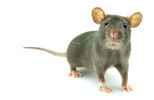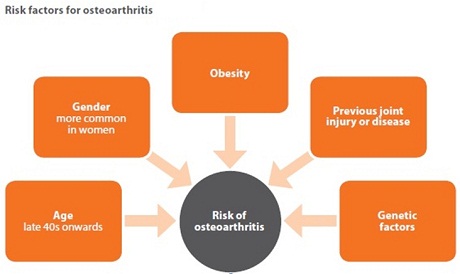 As far as I know there are three types of mouse problem. For two of them, don't call me, I'll be useless. The first type will have me swearing at my PC and the second standing on a chair. The third type is 'joint mice' and those I can sometimes help with! A joint mouse is a little bit of loose debris inside a joint, most commonly the knee. The debris can get trapped between joint surfaces causing irritation which may lead to inflammation and further damage, it may also cause the knee to lock, or indeed to prevent it from fully straightening and therefore cause instability. In teenagers and young adults (especially sporty ones) it can be because the bone grew faster than its blood supply causing it to weaken and fragment. This condition is called osteochondritis dessicans. Because the joint mice may be bony it is important to get these imaged, since they may need to be removed via keyhole surgery in order to prevent them damaging the articular cartilage further. In older patients it is more likely just cartilage that has become torn and dislodged due to a twist or sprain or as the result of osteoarthritic changes. This can still be irritating and over time can cause damage but there is the possibility of encouraging the mouse out from between the joint surfaces and into an area of the joint capsule where it won't cause damage or irritate the joint and will be slowly reabsorbed. My role in this is simple, it is to gently articulate the joint so that whilst the two surfaces are held apart, either gravity causes the mouse to fall out, or I can set up a pumping motion to try and flush it out. This process doesn't work for every patient and it is possible the mouse will find its way back into the joint but for many the joint goes back to working as normal with no need for surgery.
0 Comments
First of all let's establish what osteoarthritis is. It's a process which is initiated when the wear and tear on an area of articular cartilage (that's the smooth material covering the surfaces of most of your mobile joints) exceeds the ability of the body to repair that wear and tear. The breakdown of the cartilage alters how forces are transmitted through the joint and results in inflammation and damage and remodelling of the bones around the joint. It is the inflammation and bony remodelling that can cause pain and restrict motion. We don't fully understand what initiates this process but below is a diagram from Arthritis Research UK showing the major known risk factors So what can osteopathy do to help? Well, I can't change your gender, age or genetic factors, or indeed the history of what has happened to your joints, and losing weight is up to you; however I can work within the confines of these factors to help your body dissipate forces through the joint in the most even way possible, so the wear across the whole joint is even, working to reduce the chance of osteoarthritis. This is a natural part of what osteopaths do, looking at the body as a whole and working to reduce undue strain and restriction. For those who already have osteoarthritis, reducing and redistributing forces through the area can help to prevent further deterioration and may allow some symptom relief. For these patients I will also work to ensure that the joint remains as mobile as possible; reducing inappropriate muscle guarding. Maintaining joint movement is essential as movement and in particular compression and release of the articular cartilage stimulates the production and flow throughout the joint of synovial fluid , which helps to lubricate, provide nutrition and initiate repair.
|
Archives
February 2024
AuthorDamian is the principal osteopath at Vauxhall Village Osteopathy and Oval Osteopathy Categories
All
|



 RSS Feed
RSS Feed


